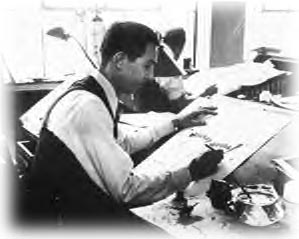2. Decide on your characters. Draw up a few sketches and make a final decision which character looks best and make sure you're meeting your target audience with the designs.
3. Start story boarding. Once you've decided on your character, story board your ideas into an effective narrative that would appeal to your audience. this can be from 10 storyboards up to however any you feel does this effectively.
4. Animatic storyboard. To do this you need to get your hand drawn/ digital story board and use a film making software to do so. In order put each story board on screen for how many seconds you want it to be seen for. Also add sound effects to give yourself an idea of what sort of time you want sounds and test which sounds are best. Dialogue is also important. If you want your characters to speak, add the casts voice in to give you yet another idea of where you want it and how good the sound will be.
5. After you're animatic you need to start thinking about how you're going to achieve this animation successfully. Start designing your characters and scenery into photo shop and making them look to the best you can.
6. Now you can start making them move. You can do this by stop motion- taking a picture of paper cut outs every time you want your character or the scenery to move.
7. Once you've finished editing you're ready to publish your video.
For more information I found a 1-10 step from disney on how to create a successful animation.
1. A storyboard is made, all the animators and directors come together to discuss the entire film.
2. The storyboards are presented as the story

3. Once the story is laid out, the dialogue is recorded. This is done before animation, so the animators know what the characters will say.
4. After the dialogue is recorded, the animators can make rough sketches of just the characters. Usually these drawings are quite messy, there is still no color, or background. Some animated films have used over 50,000 individual drawings.

At most animation studios, the best animators only sketched a few animation drawings, leaving gaps in between. Later on, a person called an "inbetweener" would finish the scenes, by drawing in between the areas that the animator had left.
5. Once the entire film has been drawn on paper, the animation drawings go to the inking department. There, the inkers copy the animation drawings on to a clear celluloid acetate, sometimes called a Cel.
6. After the outline of the characters has been made, the unfinished Cel's go to the Painting Department. The painters flip the Cel over, and paint the colors on the back. They paint on the back so the characters appear crisp, and have an outline.
7. Before the Animation Cels get photographed a background must be added. Because a Cel is clear, and it only has the painted character on it, if a background is made, it will show through. Usually backgrounds are painted with Tempera or Water Color paint. Although, in some Disney productions, the background was painted on glass, and combined with other glass painted backgrounds to create the illusion of extreme movement. (This technique is use in Snow White and the Seven Dwarfs.)
8. Now all the combined elements (the Cel and the background) can be photographed. Although, the final product is not filmed with a normal projector, or camera. A special device, with a lens mounted facing down on to a table top captures each frame of the animated feature. Usually, the background is placed into a special mount, then covered with the Cel, then covered with a large piece of glass, then photographed.
9. After all the drawings have been filmed, the dialogue is added. Sometimes the film is edited at this step.
10. The animated film is released, and the general public may view it.
( http://www.justdisney.com/animation/animation.html )




No comments:
Post a Comment